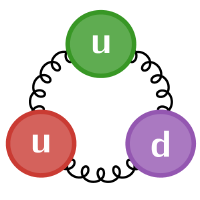Functions and Control Flow#
Here are the key constructs for defining functions and using control flow in Julia:
Functions#
Functions are defined in a very straightforward way using the function ... end syntax:
function mymult(a, b)
a * b
end
mymult (generic function with 1 method)
mymult(3, 7)
21
mymult(6+3im, -9-7im)
-33 - 69im
mymult("gold", "leader")
"goldleader"
Notice our function is working for any types (we used Int64, Complex and String) - this stays fast in Julia because of multiple dispatch that we discuss later.
Function Documentation#
A string directly before a function definition is interpreted by Julia as “documentation” for the function.
The ? operator will display the doc strings for a function, amongst other things (? also provides help for expressions and other constructs). All of the Julia standard library functions have docstrings.
"""
adder(a, b)
This function adds `a` and `b`
"""
function adder(a, b)
a+b
end
adder
?adder
search: adder addenv rad2deg
adder(a, b)
This function adds `a` and `b`
Compact Function Definition#
If we can write a function on one line then Julia allows us to not bother with function ... end:
mypow(a, b) = a^b
mypow (generic function with 1 method)
mypow(2, 8)
256
mypow("old ", 4)
"old old old old "
Anonymous Functions (lambdas)#
Anonymous functions in Julia are written using ->, like this:
x -> x>2
#3 (generic function with 1 method)
Which is not too useful like that, but comes into its own when used with something like map:
map(x -> x>2, 1:5)
5-element Vector{Bool}:
0
0
1
1
1
if then else#
Conditional execution is very easily achieved with an if block in Julia:
function gtlteq(a, b)
if a > b
println("$a is greater than $b")
elseif a < b
println("$a is less than $b")
elseif a == b
println("$a is equal to $b")
else
println("I have no idea about $a and $b!")
end
end
gtlteq (generic function with 1 method)
gtlteq(2.3, -9)
2.3 is greater than -9
gtlteq("apples", "oranges")
apples is less than oranges
Short Circuit and Ternary Operators#
Short Circuit#
The operators && and || can be used for conditional execution.
a && b- evaluatebonly ifa(i.e.,ais true)a || b- evaluatebonly if!a(i.e.,ais false)
true && "it's true"
"it's true"
false || "it's false"
"it's false"
false && "it's true"
false
Ternary#
A special type of “quick” conditional is the ternary operator, familiar from C:
2 > 4 ? "it's bigger" : "it's smaller"
"it's smaller"
The syntax is a ? b : c meaning if a, evaluate b, else evaluate c.
Loops#
For loops#
For loops are always over an iterator in Julia, allowing a loop over any object that has a beginning and an end:
for number in 1:4
println("I am at number $number")
end
I am at number 1
I am at number 2
I am at number 3
I am at number 4
enumerate and zip also exist:
for (index, string) in enumerate(["I", "think", "therefore", "I", "am"])
println("Word $index is $string")
end
Word 1 is I
Word 2 is think
Word 3 is therefore
Word 4 is I
Word 5 is am
for (hip, hop, hup) ∈ zip(1:3, 10:12, ["yes", "no", "maybe"])
println("The $hip and $hop say $hup")
end
The 1 and 10 say yes
The 2 and 11 say no
The 3 and 12 say maybe
Note that Julia is happy with for z in ... and for z ∈ ... (type \in to get a ∈; note that = can be used, so you might see this, but it is frowned upon!)
A more novel feature: for will also naturally form the outer product of a comma-separated set of iterators provided to them, without the need for “nesting” of loops. (This also applies to the for in comprehensions, so you can easily make multi-dimensional arrays with a chain of iterators if you want all the combinations that result as elements.)
for i in 1:3, j in 1:4 #like for i=1:3 ; for j=1:4 ...
println("The product of $i and $j is $(i*j)")
end
The product of 1 and 1 is 1
The product of 1 and 2 is 2
The product of 1 and 3 is 3
The product of 1 and 4 is 4
The product of 2 and 1 is 2
The product of 2 and 2 is 4
The product of 2 and 3 is 6
The product of 2 and 4 is 8
The product of 3 and 1 is 3
The product of 3 and 2 is 6
The product of 3 and 3 is 9
The product of 3 and 4 is 12
while loops#
By now it is going to be no surprise to you how Julia constructs a while loop:
countdown = 10
while countdown > 0
println(countdown, "...")
countdown -= 1
end
println("blast off!")
10...
9...
8...
7...
6...
5...
4...
3...
2...
1...
blast off!
